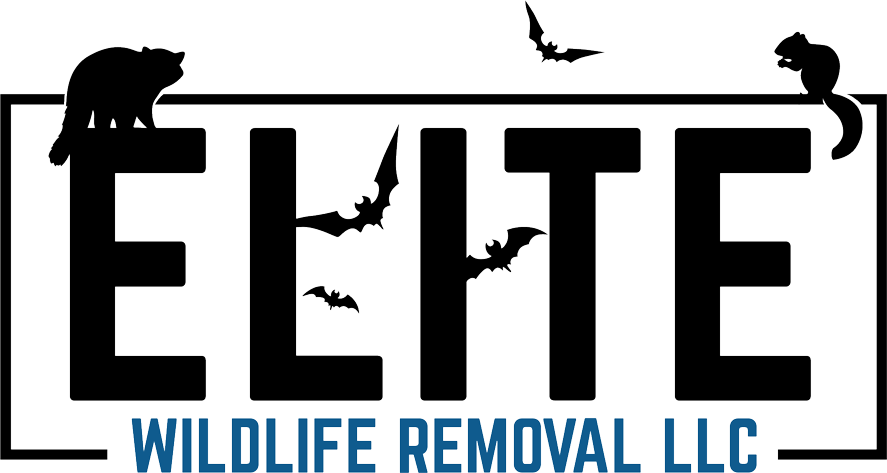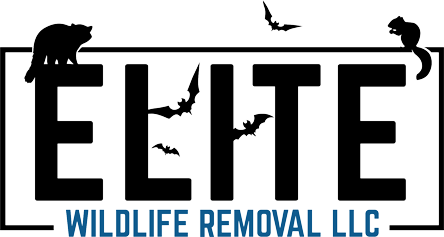How Wildlife Harms Your Property
Property Damage From Nuisance Wildlife
It doesn’t take much for wildlife to become a real issue around your home. One day, it’s just a rustling sound in the attic or a small hole near the foundation. The next, there's structural damage that's gone unnoticed for weeks—sometimes longer. Wildlife tends to move quietly, but the impact they can have on a property is anything but small. Many people think of animals in the attic or under the porch as just an annoyance, but the damage that can come with their presence can seriously affect the long-term health and value of a home or business. When animals settle into places they’re not supposed to be, they’re not just passing through. They're tearing, chewing, digging, contaminating, and in some cases, even triggering costly mechanical failures.
Roofs Take The First Hit
For many homeowners, the roof is out of sight and out of mind until there’s a leak or visible damage. Wildlife, especially raccoons, squirrels, and nesting birds, often view the roof as an entry point. They’ll scratch, pull, or chew through shingles, soffits, vents, and even flashing to reach the attic or interior structures. Once they’re inside, the damage ramps up quickly. Insulation is pulled apart for nesting.
Urine and droppings accumulate. Some animals dig even deeper, pulling at ductwork or chewing into wooden beams. And because the roof's structural elements are designed to withstand weather—not animal activity—they can wear down fast under the strain. Leaks tend to follow these breaches. Water slips in through those small holes and, over time, can cause rot or mold. What started as a squirrel looking for shelter becomes a slow-building repair bill that's easy to miss until it’s too late.
Electrical Wiring Isn’t Off Limits
Rodents, especially mice and rats, are compulsive chewers. Their teeth don’t stop growing, so they’re constantly gnawing on whatever’s around—and wiring happens to be a favorite target. Inside walls, attics, and crawlspaces, wires are often chewed bare. This can lead to flickering lights, power failures, or worse, hidden electrical shorts.
In some cases, compromised wiring creates heat or sparks, which can lead to fire hazards. The damage also tends to remain hidden until symptoms show up—by then, a significant chunk of the system may already be affected. Repairs are rarely as simple as replacing a wire or two. When the wiring behind the walls has been compromised, it often means extensive work to get things back in order.
And depending on the insurance provider, claims for rodent-related electrical issues can get denied, especially if the issue is seen as preventable. That alone is a good reason to act before damage gets worse.
Insulation And Wood Start Breaking Down
Once wildlife makes it into the walls or attic, insulation quickly becomes a target. It’s soft, it’s warm, and to many animals, it’s perfect for nesting. Unfortunately, the very act of nesting ruins its purpose. Compressed or shredded insulation loses its ability to regulate indoor temperatures. That means higher energy bills, colder winters, hotter summers, and a whole lot of waste.
And then there’s the mess. Droppings, urine, and nesting debris soak into the insulation and surrounding materials. That moisture doesn’t just smell bad—it can promote mold growth, wood rot, and deterioration of the structure underneath. Joists, beams, drywall, and even framing can become saturated and start to break down. At that point, it’s not just about removing an animal—it’s about rebuilding part of your home.
Digging Beneath The Surface
Not all damage happens overhead. Skunks, groundhogs, armadillos, and similar burrowing animals often dig along foundations, under porches, and around walkways. Their tunnels may seem small at first, but as they expand and shift the soil, they can start to destabilize the structures above.
Foundations don’t need to move much to crack. Patios begin to shift. Decks may start to lean or sag. In crawlspaces, burrowing can impact the moisture barrier or insulation and let in cold air, pests, or water. Over time, the ground itself begins to change—supporting soil erodes, and what's left behind is a hollowed-out patch that can lead to sinking or structural settling.
These problems can go unnoticed for months or even years, especially if the animal isn’t seen regularly. But once the structural symptoms appear, they’re often expensive to address.
Vents And Chimneys Become Blocked
Another area wildlife targets is chimney flues and roof vents. These spots are warm, narrow, and usually sheltered from the elements—just what a nesting bird or raccoon is looking for. While it might seem harmless at first glance, a blocked chimney or vent can cause serious problems for a home.
When air can’t circulate properly, carbon monoxide can begin to build up inside. Vents used by dryers, bathroom fans, and heating systems stop functioning efficiently. The house may begin to feel musty, humid, or harder to heat and cool. Worse yet, accumulated debris inside vents can become a fire hazard if heat is involved.
Chimneys filled with nesting material don’t vent smoke properly, which leads to backdrafting and poor indoor air quality. Removal of the blockage is just part of the issue. Afterward, thorough inspection and repair are often needed to restore proper airflow.
Waste Contamination And Rot
One of the most overlooked issues caused by wildlife is the contamination they leave behind. Animal droppings and urine aren’t just unpleasant—they’re acidic, corrosive, and biologically hazardous. Over time, this waste breaks down building materials, especially wood, drywall, and insulation. The more porous the material, the deeper it can absorb the contamination.
This leads to long-term structural damage. Wood begins to weaken. Stains spread through ceilings and walls. Mold takes hold. Once these effects are underway, it’s no longer just a wildlife issue—it’s a health and repair problem that touches multiple systems in the building.
Restoring these areas usually involves much more than a simple cleanup. In some cases, sections of wood, insulation, or drywall have to be completely replaced. That means added time, labor, and cost, all of which could have been avoided with earlier intervention.
How Professional Removal Makes A Difference
A lot of damage happens silently. Animals slip in through a gap, settle into a space, and do what they do—dig, chew, nest, and leave a mess. That’s why professional wildlife removal isn’t just about trapping or exclusion. It’s about full inspection, understanding the patterns of the animal involved, and addressing both the source of the intrusion and the aftermath.
Trained technicians know where to look, what to repair, and how to make sure the conditions that attracted the animal in the first place don’t continue. Entry points are sealed with long-term prevention in mind, not just patched over. Contaminated materials are handled properly. Structural issues are flagged early. And removal methods follow both ethical and legal standards, which is particularly important when dealing with protected species or relocation restrictions.
At Elite Wildlife Removal, we take a comprehensive approach to wildlife issues—not just removing the animal but protecting the long-term integrity of your property. If something’s making noise overhead or signs of damage have started to appear,
contact us for a professional inspection before it turns into something bigger.
All Rights Reserved | Elite Wildlife Removal


